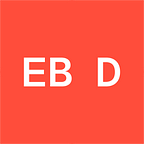Emovo care: a portable hand orthosis to bring movement home
The Lausanne-based robotic startup develops accessible assistive devices to bring movement home for people with motor impairments. Its cofounder, Luca Randazzo, shares the design story behind the promising technology.
Emovo’s robotic glove helps people who have difficulty using their hands, especially in post-stroke situations.
Based on the doctoral research of founder Luca Randazzo at the Biorobotics Laboratory of EPFL, the EPFL based start-up’s core technology consists of patent-protected artificial tendons that allow the creation of a device capable of actively opening and closing the hand through lightweight, portable and modular components.
“Our system provides a natural sensation of moving the hand through novel artificial tendons. Our first product, a portable hand orthosis (wearable medical device to support weak or damaged parts of the forearm, wrist and hand, ndr), was specifically designed for independent use for people with hemiparesis”, explains Luca Randazzo, CEO and co-founder of Emovo Care.
A design process in three steps
“The main scope of the project, in the framework of Enabled by Design, was to transform our technology into a product that users can put and operate on their own”, says Randazzo. The Emovo Care team first worked with two designers from the EPFL who helped them develop visuals to better present the technology to potential investors and clients. “In a second time, we collaborated with a design studio, Sapetti, who has experience in industrial design of lower limb exoskeletons”, adds the engineer. “This was a perfect match”. They worked together on a concept that could be industrialized. “We can summarize the design story in three steps. The first one was dedicated to branding and communication. The second one was to create several prototypes of our technology that were manufactured and tested with different users. We are now in the third phase, focusing on the design of our last prototype before launching the product commercialization.”
Randazzo emphasizes the importance of designing the devices with real users in the loop. “In addition to fighting disability through restored function, we aim at incorporating inclusion in everything we do. We strive to involve our user throughout the entire product development journey and engage people with disabilities in our operations.” This user-centric approach enabled the team to test the device at clinics and users’ homes very early in the development, and to better understand their needs. It was a critical step towards shaping the different prototypes.
“It is not all about technology”
“Identifying our users and putting them in the middle also forced us to standardize the design process”, adds Randazzo. “We spoke to several patients, identified their needs, created a design persona and wrote down a design brief. It helped us capture the users’ requirements into a framed development process and made communication with the designers easier. As an engineering team we learnt something very important: it is not all about technology.”
The support of Enabled by Design was fundamental says Randazzo. “Among other things, it really gave us the opportunity to invest into our visual identity (communication, branding, website). It is something that otherwise we would not have done”. This material is now presented by the team when they meet potential investors and talk in conferences. “Every time you present your technology to a potential investor, without a good communication and potential visualization of the product or part of the system you are developing, the chances to lose them are high”.
As of today, more than 25 patients have tested Emovo Care technology, and the startup continues to collaborate closely with different clinical partners. After a year spent on developing prototypes and solid branding and communication medium, the next step for the startup is the commercialization of its technology. “We plan to have a first product ready to be sold by 2022”, announces Randazzo.
